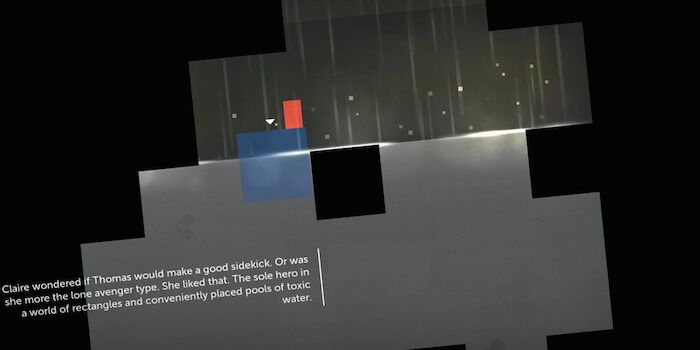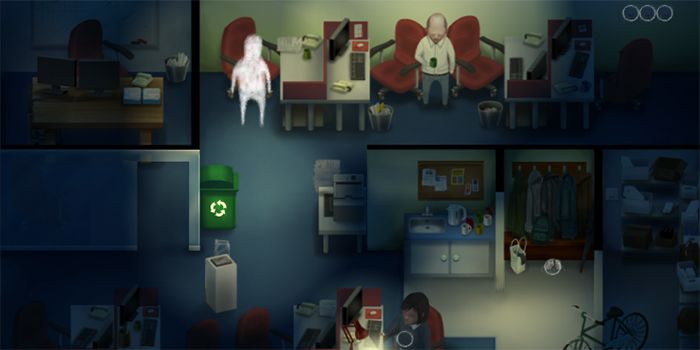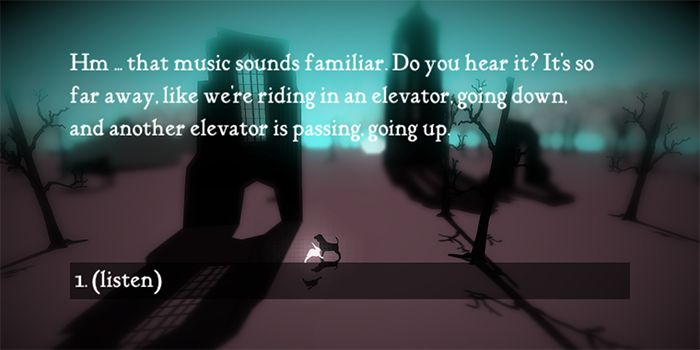Games are experiencing their own avant-garde movement in the form of "art games," which generally attract a lot of attention for being unique, weird experiments in game design.
But what exactly is an art game? Labeling an art game is tricky—for one, art games are still video games, and all video games have artistic aspirations and elements, so where do you draw the line? What key components separate art games from others, and what do art games offer players that's truly special?
What Makes an Art Game an Art Game?
To help answer this question, we can draw comparisons between games and art forms like poetry. Before we look at Thomas Was Alone versus inFAMOUS, let's look at Gertrude Stein's "If I Told Him" versus Robert Frost's "Stopping by Woods on a Snowy Evening"—they're both poetry, and they're both beautiful and emotive. However, Stein's poem is more disjointed, conceptually opaque, and occasionally frustrating to comprehend in its dancing, repetitive allusions; it's more experimental and unusual to the casual reader in practically every way.
Similarly, Thomas Was Alone feels much more experimental and unusual when compared to a game like inFamous. Thomas Was Alone is a fairly standard platformer on the surface, but the personification of each multicolored block says something about the way we attach meaning and personality to things.
Comparing Thomas Was Alone to Gertrude Stein might be reaching, and I'm not implying that an art game has to be frustrating or unappealing to the majority—quite the contrary—but there's clearly something different at work in the style and narration of Thomas Was Alone versus inFAMOUS' more traditional, flashy gameplay style. There are as many ways to respond to art as there are people in the world, but players seem to be responding positively to today's modern art games.
An Art Game Prioritizes Introspection
Plenty of games include thought-provoking material, but what differentiates an art game from the average video game is the attention paid to the overall theme or purpose. While BioShock addresses objectivism and Watch Dogs explores privacy in the digital age, these games exhibit an obvious emphasis on approachable gameplay and mechanics when compared to, for instance, Naomi Alderman's The Sun Stands Still.
The Sun Stands Still's mechanics are simple. It's a point-and-click adventure where you navigate your sketchy little blob person through their home and work, turning on light switches and trying to avoid obstacles as you go. You can't lose, and as the game goes on you become increasingly aware of the fact that—while the game is about your blob person turning light switches on and off—it's a metaphor for larger ideas about spirituality, sadness, and hope. Your blob doesn't save the world or battle supernatural forces; the true achievements happen in the abstract.
This isn't to say that The Sun Stands Still will resonate with players more than BioShock will. The point is that the former's purpose is reliant on underlying themes and player emotions, while the latter is perfectly playable if those elements are removed. Essentially, if you've played The Sun Stands Still and missed the metaphor, you probably didn't enjoy the game all that much.
Another example: Cardboard Computer's Ruins. You play as a dog chasing rabbits. Slowly. When you catch the rabbits, you have a conversation with them, a conversation about music, destruction, longing, sadness—any number of heavy, emotional topics. There's not a lot of interaction to have, and you can play through one round of the game in roughly fifteen minutes, with most of that spent walking. The long pauses between conversations and the overall slow pace draw you into the atmosphere and force you to think about each piece of information you're given. There's no action to keep you entertained, just simplistic graphics and open space to leave your mind open for contemplation.
Is it fun? Not really. But that's what sets an art game apart—being fun takes a backseat to artistry and storytelling. There's nothing to laugh at, nothing to shoot, and nothing to really do beyond move toward the next rabbit. Whether or not something like Ruins constitutes a game is an individual preference. Regardless, you can't come away from Ruins without feeling like you've internalized something, be it a more profound understanding of art or games...or annoyance, at having spent fifteen minutes of your life conversing with fictitious virtual rabbits.
Art Games Stand On Their Own
While art games may incorporate aspects of other genres, such as RPG elements, puzzle-solving, or shooting, they still function as their own separate genre. They tend to reside in the tenuous divide between what is a game and what isn't, hovering somewhere between interactive art pieces and popular notions for what a game is.
Art games serve as a way of looking at and commenting on games as a genre. They play with notions of interactivity and even the concept of "play" to push the medium in new directions, occasionally using methods that bypass fun entirely. Whether you find art games intriguing or irksome, they are certainly conversation-starters, and constantly encourage us to consider games beyond the surface level.



